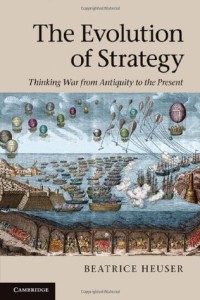Restless Continent: Wealth, rivalry and Asia’s new geopolitics by Michael Wesley
If you go into a good bookstore these days, the international politics section is bound to be focused on ISIS/Terrorism, and the rise of Asia. Meanwhile, survey show 40% of US international relations professors consider Asia the most strategically important region for the US today, with that number jumping to 66% for those looking twenty years ahead. Both data points may seem surprising given Asia has been at peace for forty years.
Why the interest in Asia? Michael Wesley’s excellent new book Restless Continent: Wealth, Rivalry and Asia’s new Geopolitics, gives four big reasons for this focus: Scale, muscle memory, pride and location. In short, Asia is bigger, has stronger states, greater pride and more important location than any comparable region in the world. And Restless Continent is as good an explainer of the key trend and challenges as you will find on the bookshelves today.
This is a foxes’ book. There’s no big “one trick you didn’t know to explain the world” claims here. Rather dozens of trends, forces, and processes are highlighted to build an insightful, complex and even contradictory picture of Asia, as fits the actual diversity of the region.
This is a significant achievement for a book which is written for the general public (published by Black Inc). Wesley has a mature writing style that comfortably balance speaking to the public while drawing on the academic books and articles which offer detailed insight into specific issues. Not many can pull this off so well, so it’s worth highlighting.
Restless Continent focuses on three key areas, economics, politics and geography. Along the way themes of interdependence, colonialism, civilisations, hierarchies, and strategy are explored. The section on economic interactions – such as global production sharing, regional infrastructure and energy arteries, along with the way humans think about and engage geography are particular stand outs.
There’s a sense balance in the analysis that recognises the way the big trends and key actor’s concerns intersect. In some instances cooperating, more often contradicting, yet the implications are still unknown, if not unknowable. For instance, urbanisation is the force that has driven Asia’s economic rise and taken an average of 1 million people out of poverty every single week since 1990.
Yet this same process also increases the pressure on often weak states to deliver services and maintain public legitimacy. Urban based insurgencies are the nightmare situation for any military, yet 1/3 to 1/5th of the urban population of the region is packed into slums, with governments increasingly worried about the implications.
What I particularly liked about Wesley’s approach to Asia is that it is not just about China. As important as the Middle Kingdom is, he gives the other states their due. Indeed, his conclusion seems to imply it is the choice of the mid-sized countries, whether to follow or resist which will the key ‘choice’ of regional leaders.
Wesley defined Asia in its broadest sense ‘from the Pacific to the Mediterranean, and the Artic to the Indian Ocean’ (p.63). He argues that this is both more natural given the regional patterns pre-colonialism, and irresistible in an interconnected world. Yet while there is occasional discussion of ‘West Asia’ (Iran, Israel, Persian Gulf etc), the book tends to focus on the sweep from India, through Southeast Asia up to North Asia. Indeed Wesley seems to admit the need to subdivide, separating a Northern Tier of Central Asia, Russia and Mongolia from a Southern Tier which is the main focus of the book.
If I did have one major disagreement, it was with Wesley’s argument that ‘all policy – what governments are able to do within but particularly beyond their borders – is enabled or prevented by an underlying distribution or structure of latent force’ (p.126). This is a common view, and since Thucydides and Machiavelli political science has always tried to look at the power behind the throne, the steel inside the velvet glove. Yet I think it’s far too simple, if not outdated an explanation of Asia today.
The evolution of the region has been far from pre-determined by the distribution of force. While the US has championed many of the current rules and structures, it achieved much of this by negotiation, compromise, and traditional diplomatic politics. There is no evidence the region simply rolled over to accommodate it. Likewise China is not finding the running all going its way as its capacity for force grows. The most notable thing about the South China Sea is how much trouble the emerging giant is having trying to achieve its will against much smaller countries such as Vietnam, the Philippines, Malaysia, Taiwan etc.
The rules of the region are at essence negotiated. Military power helps countries seeking to shape those rules, but so does legitimacy, diplomatic skill, coalition building and the capacity to mount a persuasive argument. Wesley’s claim to see a substructure of force underneath that determines ‘all’ behaviour, also seems to contradict the important focus he places on psychological factors such as identity and history as key shapers of the relations between countries in Asia.
This criticism aside, I’m slightly surprised this book hasn’t had a bigger reception. Wesley is a charismatic speaker and engaging writer, with a significant CV and recognition around Australia’s corridors of power. The lack of one “big trick to understand Asia” probably hurts the PR pitch, but makes for an infinitely more engaging and interesting book.
While most US IR professors see Asia as the most important region, it is notable how few work on it. And fewer still among those can translate the work of their field into publicly engaging prose. Michael Wesley is one of the rare few who can do both. Restless Continent is therefore self-recommending.
* Disclaimer – Michael Welsey is Director of the Coral Bell school of Asia Pacific Affairs at ANU, within which sits the Strategic and Defence Studies Centre where I work.














